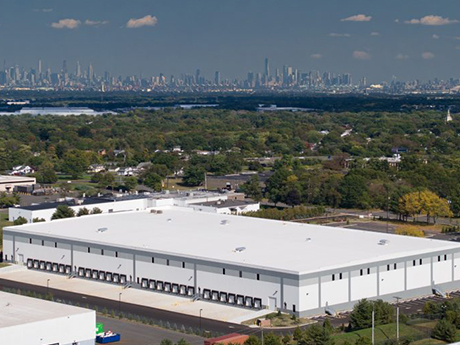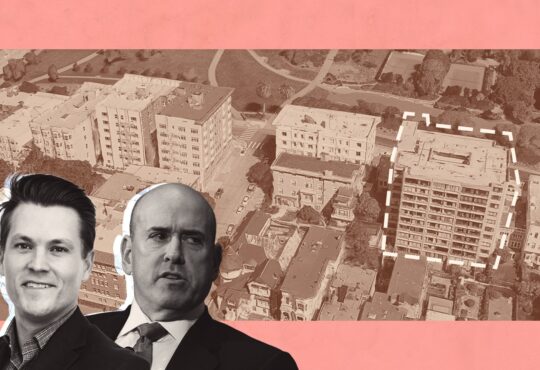

The multifamily market is experiencing a more positive outlook as tailwinds such as barriers to homeownership, limited supply in select geographies and a steady job market have kept rents on a year-over-year growth trajectory, according to Yardi Matrix, and reinvigorated investment interest in the sector. Combined with lowering interest rates and the preservation of key tax strategies like 100 percent bonus depreciation, investors are ready to make moves to position their real estate portfolios for the next cycle.
Current opportunities have many investors considering entering the multifamily market or adjusting their portfolios within the sector. That said, with rent growth rates remaining well under the historic highs of a few years ago and supply imbalances in certain markets driving up average vacancies, strategic approaches to portfolio building will make all the difference in unlocking value, building wealth and meeting goals through multifamily investments in this market.
LIKE THIS CONTENT? Subscribe to the Finance & Investment Newsletter
1. Shifts in location demand drivers
Broader social, economic and lifestyle trends are prompting investors to reassess the geography of their multifamily portfolios. One example is the renewed interest from investors—ranging from high-net-worth individuals to institutional owners—in the resilience and diversification opportunities of West Coast markets, especially amid oversupply in some Sun Belt markets.
Specifically, the pandemic-driven acceleration of California’s out-migration trends, particularly in areas with a high cost of living and dense, urban office-using employment like the Bay Area, had many multifamily investors looking to take their capital elsewhere or pause on making any moves regarding their properties in the region a few years ago. Now, with major companies instituting stricter return-to-office mandates and recognition of the unmatched professional environment and general quality of life the region offers, we’re seeing more demand for high-quality rental housing.
Research from the Brookings Institution notes that, despite broader geographic diversification, the Bay Area continues to dominate the next generation of tech, with San Francisco and San Jose remaining unparalleled hubs of AI success—positioning the region for long-term growth.
This has prompted forward-looking investors to scale their multifamily portfolios within the region with these tech professional demographics in mind. Nationally, we anticipate continued return-to-office mandates, and shifting industry hubs will influence the geographies and types of apartment communities in demand.
2. Flight to quality, stability and new opportunities
With growing confidence in multifamily demand, we’re seeing more buyers trade smaller properties for larger, higher-quality assets to achieve scale and long-term stability. We recently helped a private family investor more than double their unit count—trading from three smaller, vintage assets in original condition totaling 33 units to two fully remodeled assets totaling 70 units in a 1031 exchange transaction. We sourced a buyer drawn to a rare value-add opportunity and secured a competitive purchase price on the high-quality renovated assets at a pivotal moment in the market.
Another strategy in response to geographic demand shifts and overarching trends—such as high barriers to homeownership producing longer-term renters seeking quality apartments—is acquiring best-in-market properties in emerging tertiary markets that may have some proximity to an investor’s existing portfolio or previous ownership experience. For example, we’re seeing some investors who have traditionally focused on the San Francisco Bay Area expand to submarkets within the Central Valley and Monterey Bay.
3. Stabilizing rates and tax strategies impact timing
In addition to multifamily demand drivers, macroeconomic factors and fiscal policies have also contributed to the reduction of some of the “wait-and-see” behaviors and invigorated transaction volume in the market.
The recent downward trajectory of interest rates, with another cut anticipated this month, has reduced borrowing costs and reactivated buyers who had been on hold. Another factor driving the timing of real estate transactions and multifamily portfolio growth on a national level is the suite of tax advantages that can bolster investment and wealth-building strategies.
For example, the One Big Beautiful Bill Act has several implications for property owners, including restoring 100 percent bonus depreciation and preserving larger deductions up front. This opportunity for improved cash flow and greater clarity in long-term planning has prompted many multifamily owners to make moves this year. As market sentiment continues to stabilize and investors reengage with multifamily, strategic portfolio positioning will be key to long-term success. Whether it’s leaning into resilient markets like the Bay Area, scaling up into higher-quality assets or taking advantage of favorable tax strategies, investors who act thoughtfully in today’s environment are well positioned to build durable value and capture opportunities as the next cycle takes shape.
Adam Levin is executive managing director of Levin Johnston of Marcus & Millichap, and Robert Johnston is executive managing director of Levin Johnston of Marcus & Millichap.






